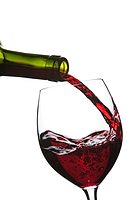Streamlined Microbiological Workflows for the Detection of Listeria monocytogenes in Food

Listeriosis, which is caused by eating food contaminated with the bacterium Listeria monocytogenes, is an important public health concern in the U.S. The U.S. Centers for Disease Control and Prevention (CDC) estimates that approximately 1,600 illnesses and 260 deaths occur annually due to listeriosis in the U.S.[1]
To ensure consumer safety, rapid detection methods of L. monocytogenes in food are critical. However, traditional methods for detection require an enrichment step that is time consuming and labor intensive.
This article describes a solution designed to simplify and shorten the workflow of pathogen enrichment. Readybag® Half Fraser Broth comprises aluminum pouches filled with preweighed and gamma-irradiated granulated culture media, eliminating the need for upfront media preparation. Readybag Half Fraser Broth is compliant with ISO standard formulation.
The article will evaluate the application of the enrichment media in Readybag pouches for the detection of pathogens in wiener sausages, cream cheese, cantaloupe melon and cooked prawns. The article will provide the workflow and data for L. monocytogenes detection according to ISO 11290-1 in detail. Traditional preparation of Half Fraser Broth was used as the reference method.
Materials and Equipment
Culture media:
• Readybag Half Fraser Broth 12.5 g (1.02449.0060)
• FRASER Listeria Selective Enrichment Broth (base) (1.10398.0500)
• FRASER Listeria Ammonium iron(III) Supplement (1.00092.0010)
• FRASER Listeria Selective Supplement (1.00093.0010)
• Chromocult® Listeria Selective Agar (base) (1.00427.0500)
• Chromocult Listeria Agar Selective Supplement (1.00432.0010)
• Chromocult Listeria Agar Enrichment Supplement (1.00439.0017)
• PALCAM Listeria Selective Agar (Base) (1.11755.0500)
• PALCAM Listeria Selective Supplement (1.12122.0010)
PCR test kits:
• Foodproof® StarPrep II Kit (S 400 08, Biotecon Diagnostics GmbH, Postsdam)
• Foodproof Listeria monocytogenes Detection Kit (R 302 23, Biotecon)
Test strains:
• L. monocytogenes, St 26/1/II/03
• L. monocytogenes, W29/1/II B 2002
• L. monocytogenes, Frd. Nr.594
• L. monocytogenes, W 07/13
Methods
 The workflow for the food trials was based on ISO 11290-1 (Figure 1). Four food types were investigated: wiener sausages, cream cheese, cantaloupe melon and cooked prawns. Each sample of mentioned foods was portioned aseptically to 25 g, and the samples were added into sterile stomacher bags. All food samples were inoculated at low levels with 1 mL L. monocytogenes suspension (inoculation level of 1–5 cfu/25 g sample). Negative controls were used without inoculation.
The workflow for the food trials was based on ISO 11290-1 (Figure 1). Four food types were investigated: wiener sausages, cream cheese, cantaloupe melon and cooked prawns. Each sample of mentioned foods was portioned aseptically to 25 g, and the samples were added into sterile stomacher bags. All food samples were inoculated at low levels with 1 mL L. monocytogenes suspension (inoculation level of 1–5 cfu/25 g sample). Negative controls were used without inoculation.
For the traditional workflow, Half Fraser Broth was prepared by weighing, dissolving, autoclaving and aseptic addition of supplements (Figure 1). Half Fraser Broth (225 mL) was added to each food sample.
For the Readybag workflow, the preweighed and sterile content of one Readybag pouch was added directly to the food sample followed by the addition of sterile, demineralized water dispensed from an Elix® Advantage Water Purification System (Figure 1).
All samples were homogenized in a paddle blender for 1 minute.
The stomacher bags were incubated at 30 °C for 24 hours.
After 24 hours of incubation the Half Fraser Broth was streaked to Chromocult Listeria Agar and Palcam Agar; 0.1 mL of the culture was transferred to 10 mL Fraser Broth.
Chromocult Listeria Agar and Palcam Agar were incubated at 37 °C and read out after 24 hours and—if necessary—after an additional 24 hours to check for the presence of characteristic colonies.
Fraser Broth was incubated at 37 °C for 48 hours and streaked to Chromocult Listeria Agar and Palcam Agar. Both agar media were incubated at 37 °C and checked for characteristic colonies after 24 and 48 hours.
Characteristic colonies from the plates were confirmed by real-time PCR.
Results
 All spiked samples of wiener sausage, cream cheese, cantaloupe melon and cooked prawns showed positive results with both the traditional and Readybag workflows. There were no false-negative results (Table 1).
All spiked samples of wiener sausage, cream cheese, cantaloupe melon and cooked prawns showed positive results with both the traditional and Readybag workflows. There were no false-negative results (Table 1).
All negative controls without spiking showed no characteristic colonies on the agar plates. There were no false-positive samples with either of the workflows. Additionally, testing of Salmonella with Readybag Buffered Peptone Water against the traditional autoclaved media according to ISO 6579:2002 led to comparable results (data not shown; workflow is similar to that of Half Fraser Broth).
Conclusion
Food trials with the enrichment of L. monocytogenes demonstrate that the Readybag Half Fraser Broth workflow provides results identical to the traditional workflow with media preparation in an autoclave.
Readybag pouches offer significant time savings compared to the traditional method of sample preparation. In the case of Listeria enrichment with Half Fraser Broth, using Readybag pouches reduced workflow time (media preparation to incubation) from 24 to 8 minutes.
Rolf Ossmer is head of applied microbiology, Volker Lanz is product manager, dehydrated culture media, and Andreas Bubert is head of global marketing, food & beverage segments, at Merck Millipore/BioMonitoring in Darmstadt, Germany.
References
1. www.cdc.gov/listeria/statistics.html
Looking for a reprint of this article?
From high-res PDFs to custom plaques, order your copy today!



